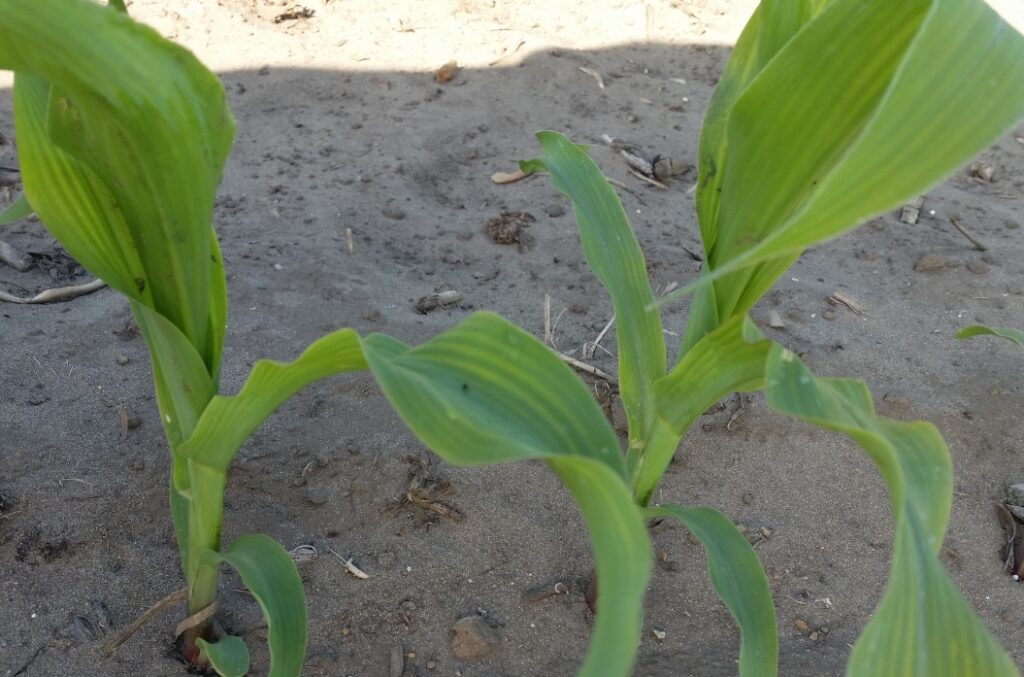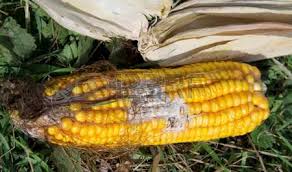Manganese Deficiency
June 28, 2016Manganese (Mn) is one of nine essential micronutrients for plant growth. Corn is only a moderate consumer of manganese and so deficiency in most mineral soils is rare. High organic matter (muck) soils can be more frequently diagnosed with some level of Mn deficiency. In mineral soils under dry conditions and where the soil is particularly loose, manganese will get oxidized into a form that is unavailable to the corn plant. In these situations, wetter areas of the field or areas that have been consolidated by wheel traffic will actually show less Mn deficiency than drier, looser sections of the field (see Figure 1).

Manganese is highly immobile in the plant so Mn deficiency symptoms are first seen in the young leaves. Mn deficiency is recognized by interveinal chlorosis (yellowing between the veins of the leaves) while the veins themselves remain darker green (Figure 2). Manganese deficiency looks similar to magnesium (Mg) deficiency but Mg deficiency is often much more pronounced in the older leaves on the plant.

The appearance of manganese deficiency in corn may be short lived if rainfall reduces the oxidation of Mn and/or if root exploration improves Mn uptake. Manganese deficiency can be treated in crop with a foliar application of chelated Mn or manganese sulphate with an aim of applying 0.5 to 2 lbs of Mn per acre. Fields that are susceptible to Mn deficiency will more often result in soybeans showing signs of manganese deficiency as soybeans are higher users of Mn.

Greg Stewart
Maizex Seeds Agronomy Lead
Like what you’re reading? Sign up to receive weekly agronomy updates from Greg Stewart and the Maizex Agronomy Team right to your inbox! CLICK HERE
